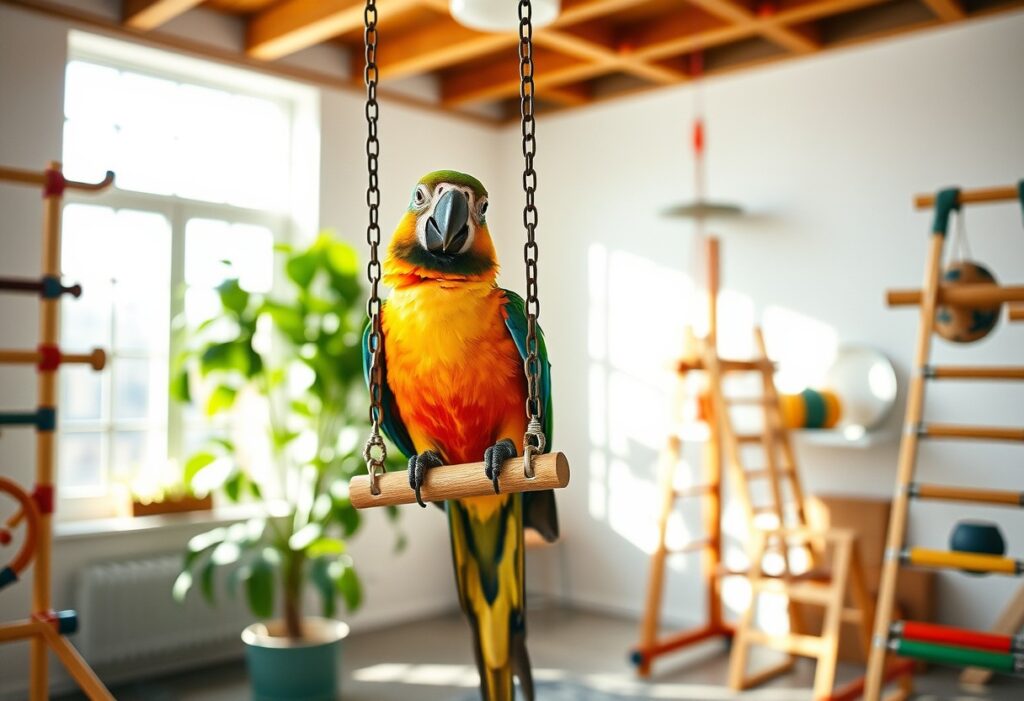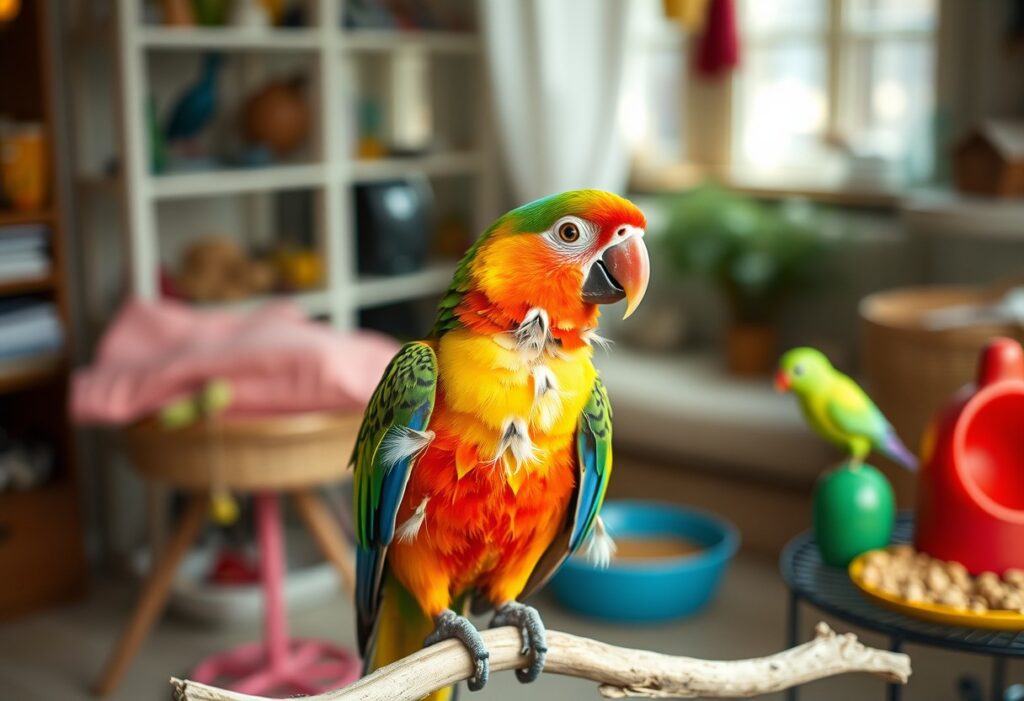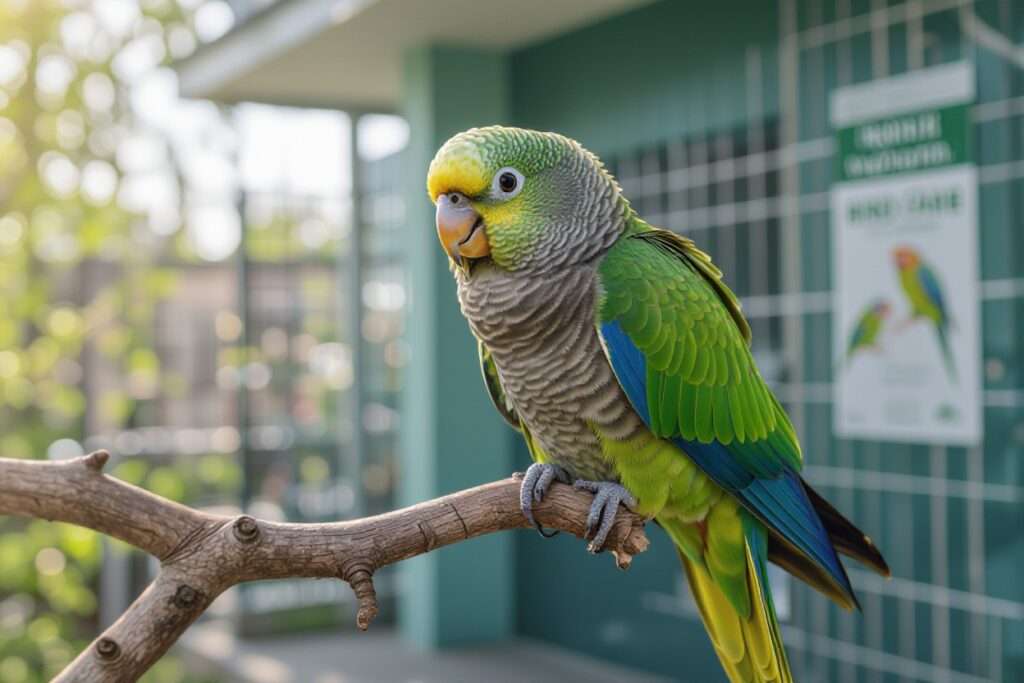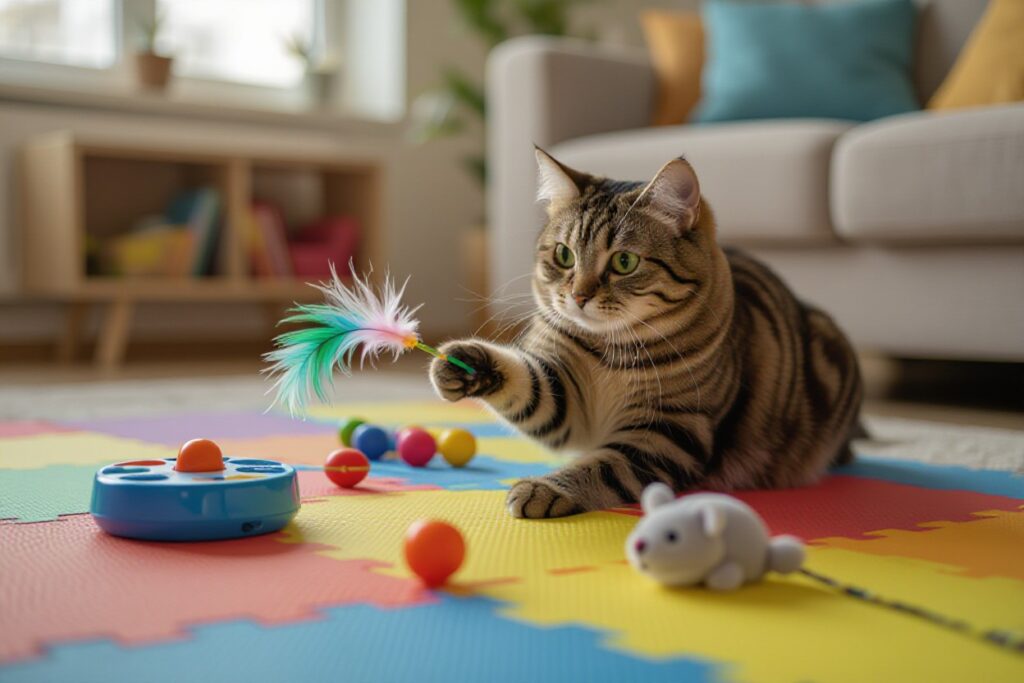Avian well-being heavily relies on regular exercise, which not only helps in maintaining optimal body weight but also boosts mental stimulation. As a bird owner, you should ensure that your feathered friend engages in physical activities to prevent serious health issues, including obesity and feather plucking. Providing suitable toys and space for flight can significantly enhance your bird’s quality of life and overall happiness. By prioritizing exercise, you contribute to your pet’s longevity and vitality, making them more energetic and well-adjusted.
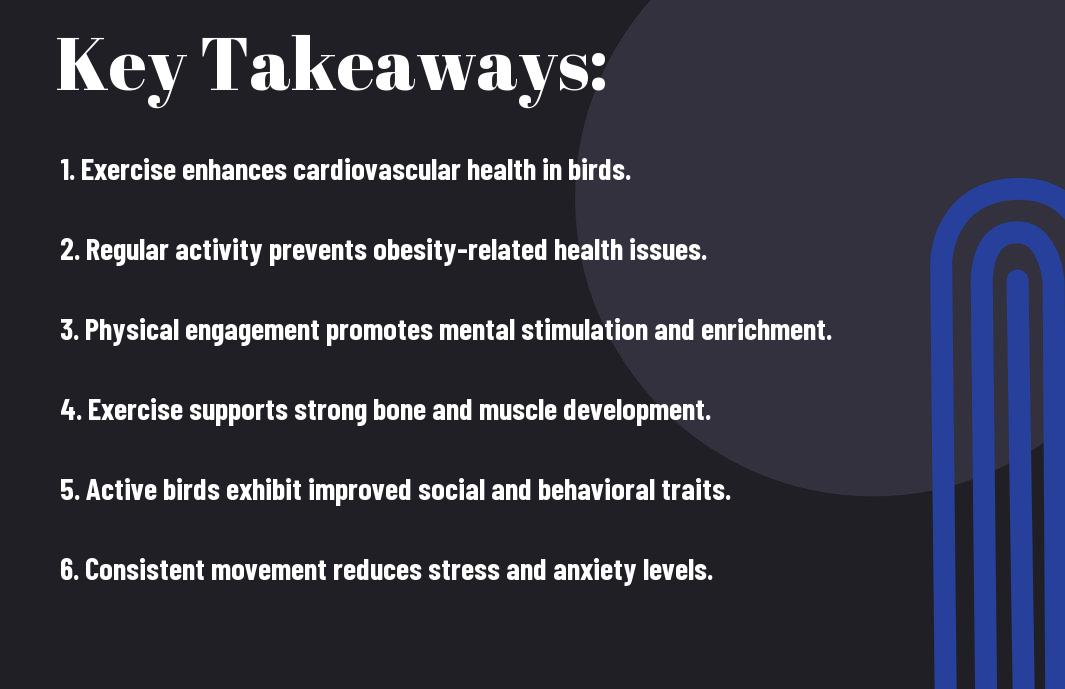
The Importance of Exercise for Birds
Before you probe the world of bird care, it’s crucial to recognize that exercise is vital for maintaining your feathered friend’s overall health and well-being. Just like humans, birds require physical activity to thrive, and incorporating regular exercise into your bird’s routine can lead to a lifetime of health benefits. Adequate exercise helps prevent a number of physical and mental ailments, ensuring your avian companion stays active and happy.
Physical Health Benefits
Physical activity plays a significant role in keeping your bird healthy and fit. Regular exercise helps to maintain a healthy weight, which is particularly important given the tendency of many pet birds to become overweight due to a sedentary lifestyle. Engaging in activities such as flying, climbing, and playing can help strengthen their muscles and improve their cardiovascular health, making them less susceptible to various diseases.
Moreover, meaningful exercise can significantly contribute to proper digestion. As birds engage in physical activities, their digestive systems become more efficient, which can help mitigate issues like obesity and other related disorders. Thus, providing ample opportunities for exercise is not merely a luxury; it is a critical component of your bird’s physical health.
Mental Health Benefits
To ensure your bird remains content and mentally stimulated, exercise plays a crucial role. Just as humans benefit from physical activity to reduce stress and anxiety, so too do birds. Engaging in vigorous activities can help alleviate feelings of boredom and loneliness, which can lead to behavioral issues such as feather plucking or excessive vocalization. Establishing a routine filled with exercise can foster a happier and more balanced bird.
Understanding the connection between physical activity and your bird’s mental health can make a world of difference. Not only does exercise relieve boredom, but it also provides opportunities for social interaction and enrichment, which are vital for your bird’s emotional stability. Incorporating toys, flight time, and interactive games fosters an environment conducive to both physical and mental well-being.
Development and Growth
An vital aspect of your bird’s development is the opportunity for exercise, especially during their formative stages. Appropriate physical activity contributes to stronger bones and muscles, which is critical as they grow. Young birds need a variety of movements to develop coordination and agility, allowing them to explore their surroundings safely and effectively.
Health is fundamentally intertwined with your bird’s capacity to engage in exercise. Providing a safe and stimulating environment promotes optimal growth and development, ensuring your bird achieves its full potential. Whether you use perches, swings, or safe toys, providing your bird with opportunities to exercise will help them develop strong and healthy bodies.
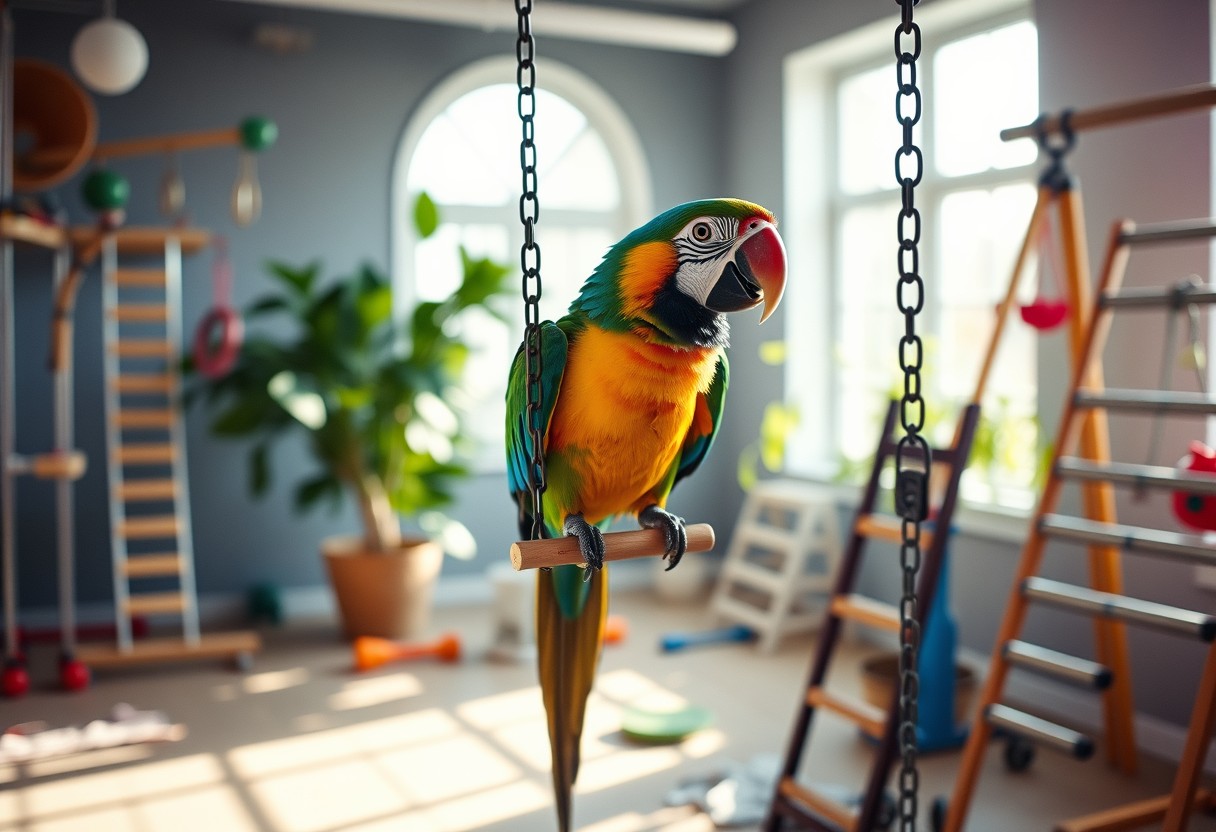
Types of Exercise Suitable for Birds
Now, understanding the importance of exercise for your feathered friend is crucial for maintaining their overall health and well-being. You can incorporate various types of exercise into your bird’s routine to keep them active and happy. Below is a breakdown of suitable exercises for birds:
| Type of Exercise | Description |
|---|---|
| Flight Exercises | Encouraging flying within a safe environment. |
| Ground Activities | Engaging your bird with activities on the ground. |
| Play and Enrichment | Offering toys and interactive games to stimulate your bird. |
| Social Interaction | Bonding through supervised play with you or other birds. |
| Outdoor Adventures | Exploring safe outdoor environments for natural stimuli. |
Flight Exercises
Types of flight exercises are vital for promoting your bird’s physical fitness. You can create a safe and spacious area for your bird to fly freely. This can be in the form of a dedicated bird room or an enclosed outdoor aviary. Make sure to remove any potential hazards like ceiling fans and other dangers while allowing them the space they need to spread their wings.
Additionally, you can encourage your bird to fly by using various techniques. Use toys or treats that engage their curiosity or create a positive reinforcement system that encourages flying back to you. The goal is to keep the exercise enjoyable, cultivating a sense of freedom and satisfaction in your pet’s baseline activities.
Ground Activities
For ground activities, you can involve your bird with various toys that encourage movement and dexterity. These can include ladders, swings, and climbing ropes. Such items stimulate their natural instincts and encourage exploration, promoting both physical and intellectual growth. Engaging your bird in hopping, climbing, or foraging activities will expand its range of motion while keeping it entertained.
It is also beneficial to set up an area where your bird can explore different textures and surfaces. This helps to stimulate curiosity and promotes overall coordination skills. It’s crucial to supervise your bird during these activities to ensure they remain safe from any hazards that might arise.
Play and Enrichment
Exercises focused on play and enrichment can significantly contribute to your bird’s psychological and physical health. Providing a variety of toys that can be chewed, climbed, and manipulated is key. Not only do these toys promote exercise, but they also prevent boredom, which can lead to destructive behaviors. Rotate the toys regularly to maintain their interest and engage their natural instincts.
A variety of games that you can play with your bird will help further develop your bond. Consider engaging them in a game of fetch, using small toys they can carry in their beak. Being interactive with your bird during these exercises enhances both their emotional well-being and strengthens your relationship.
Perceiving your bird’s need for exercise is critical as it plays a crucial role in their happiness and health. By implementing a combination of flight exercises, ground activities, and enriching play opportunities, you’re ensuring a physically and mentally stimulating environment for your avian companion.
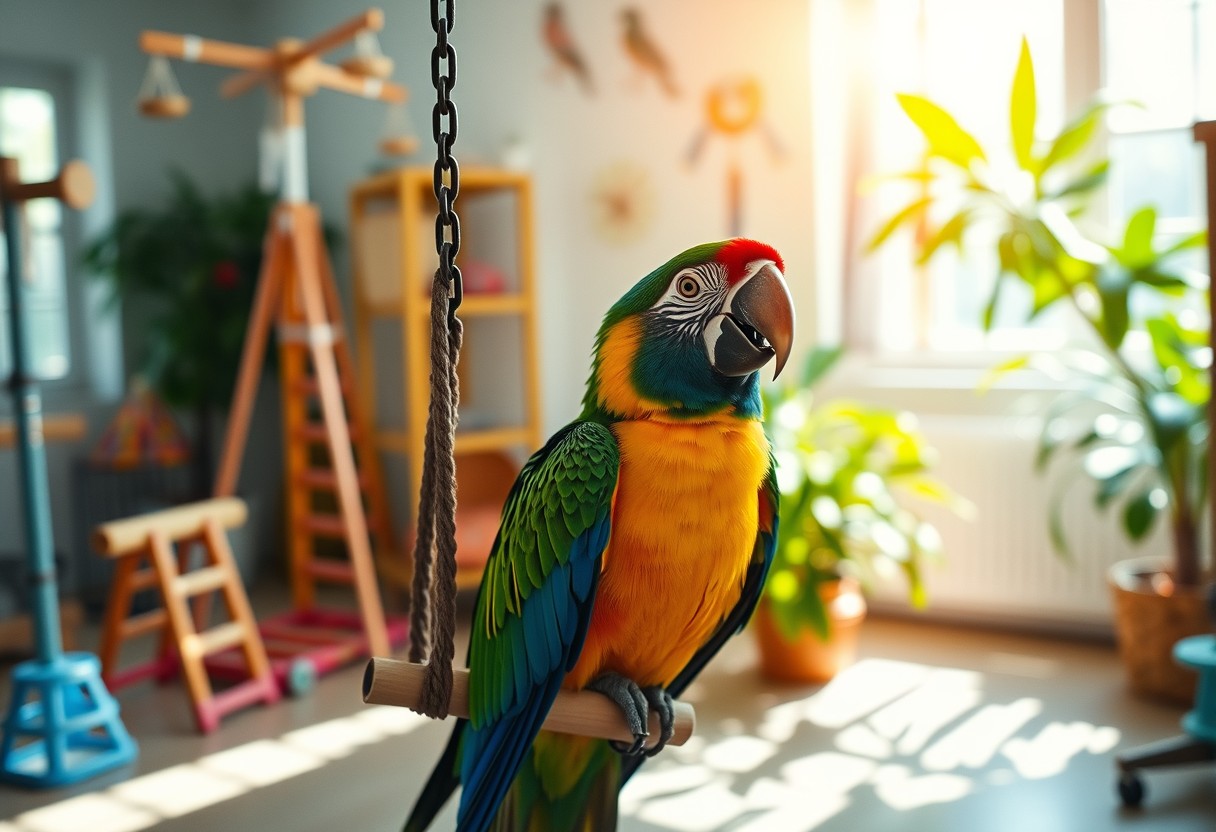
Exercise Recommendations
Once again, understanding the necessary role of exercise in maintaining your bird’s health can greatly enhance its quality of life. Providing the right amount of daily activity fosters well-being, reduces stress, and can even prevent weight-related health issues. Implementing an effective exercise routine requires consistency and knowledge about your feathered friend’s specific needs.
Daily Exercise Guidelines
One of the fundamental aspects of your bird’s exercise regime is establishing a daily routine. Depending on the species, most birds require at least 1 to 2 hours of dedicated playtime outside their cage each day. This can include flight time, supervised out-of-cage opportunities, or engaging in activities that stimulate their natural instincts, such as climbing, foraging, and exploring. Utilize safe spaces in your home where your bird can stretch its wings without risks. Bear in mind, it’s important to maintain a routine so your bird anticipates and looks forward to its exercise sessions.
Additionally, keep in mind that a bird’s exercise needs can vary significantly based on its species. Active species such as parrots may require longer periods of flight and playtime, while smaller birds may need less time but still benefit greatly from regular activity. Integrating various activities into your bird’s exercise routine helps to keep it mentally stimulated and prevents boredom.
Tailoring Exercise to Specific Species
Exercise needs can vary widely among different bird species, and it is important to tailor your approach to your bird’s specific requirements. For instance, larger parrot species such as macaws benefit from ample flight time and climbing opportunities, while smaller species, like finches or canaries, may do well with shorter bursts of exercise within their cage or a secure play area. Understanding your bird’s natural tendencies will allow you to create an engaging and appropriate exercise routine tailored just for them.
Plus, providing a variety of toys and climbing structures can greatly enhance your bird’s exercise experience. Rotate toys frequently to maintain engagement, and consider using foraging toys to tap into your bird’s natural instincts. This variation not only encourages active play but also offers mental stimulation, crucial for overall health. Adjust the intensity and duration of activities based on your bird’s age, health condition, and energy levels to ensure a positive and safe experience.
Safety Considerations
Specific safety precautions must be observed during your bird’s exercise sessions to prevent accidents and injuries. Always supervise your bird when it is out of its cage or on a free-flying adventure, as hazards can include open windows, ceiling fans, other pets, or toxic plants that lurk in your home. Investing in a harness designed for birds can also help you safely take your feathered friend outdoors while giving them the freedom to explore their environment.
It is necessary to create a safe space where your bird can exercise without danger. Ensure that the area is free from any non-bird-safe items, and remove potential threats before allowing your bird to play. Investing time in understanding your bird’s behavior and tendencies can help you anticipate and mitigate risks, ensuring a more enjoyable and successful exercise experience.
Conclusion
To wrap up, the role of exercise in bird health is vital for maintaining both physical and mental well-being. As a bird owner, you play a crucial part in facilitating the active lifestyle that your feathered friend requires. Regular exercise helps prevent obesity, reduces the risk of chronic diseases, and enhances cognitive function. Incorporating diverse activities into your bird’s routine—from flight time to interactive toys—can significantly improve their quality of life. You should take initiative to create an enriching environment that allows your bird to explore, climb, and indulge its natural instincts.
Moreover, fostering a culture of exercise not only benefits your bird’s physical health but also strengthens your bond. Engaging in activities together can be an enjoyable experience for both you and your feathered companion. By staying proactive about your bird’s exercise needs, you contribute to a happier, healthier life. Do not forget, the responsibility you have as a caregiver encompasses more than just diet and shelter; it’s about nurturing an active and stimulating lifestyle for your pet that ultimately leads to a harmonized existence together.
Q: How does regular exercise benefit the overall health of birds?
A: Regular exercise is vital for birds as it helps maintain a healthy weight, supports cardiovascular health, and improves muscle strength. It also promotes good mental health by allowing birds to engage in instinctual behaviors such as flying, hopping, and climbing. Exercise can prevent obesity-related health issues, such as heart disease and diabetes. Furthermore, active birds tend to have better feather quality and overall vitality, which contributes to their longevity.
Q: What types of activities can encourage exercise in pet birds?
A: Encouraging exercise in pet birds can be achieved through various activities. Providing a spacious cage with perches at different heights promotes climbing and maneuverability. Flying time outside the cage in a safe and supervised area is crucial for larger birds. Interactive toys that require movement to obtain rewards, such as foraging toys or swings, can keep birds engaged. Additionally, creating obstacle courses or allowing them to explore safe spaces can also stimulate physical activity and exercise.
Q: What signs may indicate that a bird is not getting enough exercise?
A: Signs that a bird may not be getting enough exercise include weight gain, lethargy, and a reduced desire to play or interact. Physically, you may notice fluffed feathers, a lack of preening, or an overall disheveled appearance. Behavioral changes such as increased aggression, boredom, or excessive vocalization can also suggest that a bird needs more physical stimulation. If you observe these signs, it may be necessary to reassess their daily routine and incorporate more opportunities for exercise.
